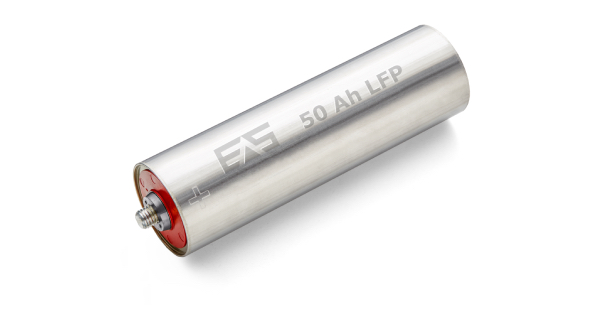The Karlsruhe Institute of Technology, EdgeWave and EAS Batteries have joined forces to significantly improve the performance of cylindrical lithium ion cells. The three research partners are transferring concepts of laser structuring of electrodes to large-format winding cells for the first time and applying them to the sustainable and safe active material lithium iron phosphate (LFP).
Laser-structured LFP cathodes promise higher energy density, shorter charging times and a longer lifetime of the round cells. The “High-E-Life” research project has a total volume of 2.1 million euros and is being funded by the Federal Ministry of Education and Research with 1.3 million euros from the special “Climate and Transformation Fund”.
Cells of the future: fast-charging and high capacity
Perforations in the active material of the electrodes shorten the paths of ion migration and thus accelerate the charging and discharging process in a lithium ion cell. The so-called ion highways can prospectively reduce the charging times of large-format LFP round cells to half or even a third. At the same time, thicker electrodes can be wound due to the higher mechanical flexibility. This increases the energy density and thus the capacity of the cell. Modern laser technology makes electrode structuring possible. The latest ultra-short pulse lasers can ablate the sensitive active mass with pinpoint accuracy without affecting the remaining layers.
Target application: LFP high-energy cell in modular marine battery system
The project consortium combines the latest laser technology with state-of-the-art battery cell technology. The Karlsruhe Institute of Technology is researching laser-based processes in cell production, which are to be validated and applied in the production of the cell developer EAS Batteries with the help of high-end laser beam sources from EdgeWave. The concrete application goal of the research project is to develop a cell that surpasses the properties of the current EAS portfolio cell “MP602030 LFP 50 Ah” and to use it in the modular battery system for the maritime industry EASy Marine®.
Climate and Transformation Fund: Developing Germany as a business location
The focus of the joint project “High-E-Life” is driving forward the electrification of mobility and combining key technologies for the energy turnaround with high growth potential. In addition, the new material and design concepts open up new product fields for lithium-ion batteries in Germany. In this way, they sustainably strengthen Germany as an innovative technology location with high-quality battery cell production. The project runs for three years and ends on 31 January 2026. EAS Batteries is coordinating the research project.









































